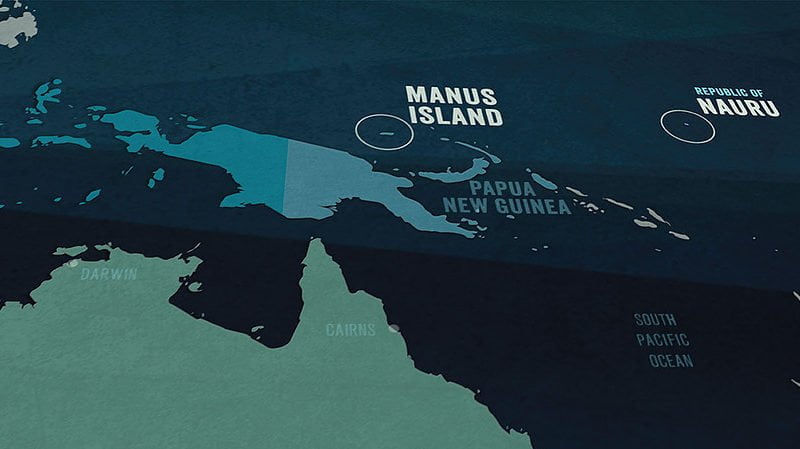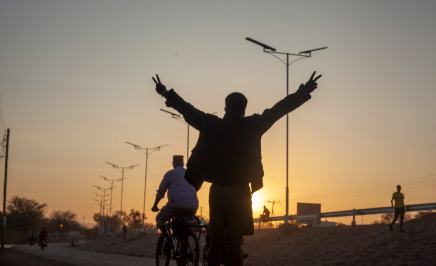In brief
For over a decade the Australian Government has sent men, women and children seeking safety – refugees and asylum seekers – to Nauru and Manus Island, Papua New Guinea and while the PNG deal has ended the deal with Nauru remains. Rather than assessing all people asking for protection in a fair, efficient and orderly way, the Australian Government has created a deliberate system of abuse for thousands of adults and children.
Read more
For a decade the Australian Government has sent men, women and children seeking safety – refugees and asylum seekers – to Nauru and Manus Island, Papua New Guinea. While the deal with PNG concluded at the end of 2020, over 60 individuals remain in limbo in Port Moresby.
Rather than assessing all people asking for protection in a fair, efficient and orderly way, the Australian Government has created a deliberate system of abuse for thousands of adults and children.
The people in offshore detention don’t stand alone. We’re a movement of people who won’t stop until refugees and asylum seekers in the Australian Government’s care are safe.
Together and working closely with like-minded organisations, supporters have already helped to:
- get all kids off Nauru
- see the safe return of Hakeem al-Araibi to Australia
- get some of the people trapped on Manus Island to safety: including those now resettled in the US such as Imran Mohammed; Abdul Aziz Muhamat, now in Switzerland; and Behrouz Boochani, now free in New Zealand.
With your help, Amnesty can continue campaigning to bring the people in Australia’s offshore detention centres to safety.
According to the Amnesty International Australia Human Rights Barometer 2022, Australians want an end to offshore detention.
74% of respondents agreed or strongly agreed that if people are found to be refugees, they should be settled in Australia as opposed to settled or detained offshore. A total of 60% of surveyed Australians think that the Federal Government spends too much money on keeping asylum seekers in detention.

Who has Australia imprisoned on Manus and Nauru?
Under Australia’s offshore 'processing' policy, people seeking asylum in Australia and who arrive by boat, are sent to Nauru or Manus Island for their refugee claims to be determined.
Read MoreBringing people in offshore detention to safety
Most of the people on Manus Island and Nauru are recognised refugees who have proven their lives would be in danger if they were returned to their countries of origin.
Australia’s offshore processing system resumed in September 2012, but on 19 July 2013 the Australian Government made the policy more restrictive so that those sent to Nauru or PNG were never able to be resettled in Australia. Between July 2013 and February 2017 the Australian Government sent 3,127 people seeking asylum to Nauru and Manus Island, Papua New Guinea.
CloseOn the ground in Manus and Nauru
Prolonged and indefinite detention, combined with bleak future prospects, has broken many of the men, women and children in offshore detention.
Read More
Bringing people in offshore detention to safety
The issue in depth
“The system the Australian Government has designed for refugees and asylum seekers, has a kind of evil and devastating effect. It can ruin the very inner strength of human spirit.” Imran Mohammad, former Manus Island detainee
Prolonged and indefinite detention, combined with bleak future prospects, has broken many of the men, women and children in offshore detention.
Offshore processing created a serious medical crisis on both Nauru and PNG. For those still trapped in PNG, specialised medical support is desperately needed, including mental health services and torture and trauma counselling.
Amnesty International went to Manus Island and later Port Moresby on a number of occasions to document what was happening at the refugee detention centres.
Our researchers raised numerous concerns over lack of access to food, power, water, medical and transport services for refugees, as well as the deteriorating mental health of refugees still in the centre. We further documented the situation facing the men once they were transferred to Port Moresby, again highlighting issues with safety and the level of health care they were receiving.
Close

What is Amnesty calling for?
We continue to call on the Australian Government to do the only humane thing — immediately bring the refugees and asylum seekers in PNG to safety in Australia.
Read MoreMany Australians are deeply concerned about what’s happening with Australia’s offshore detention centre regime, and the lack of long-term solutions for those trapped there. This includes those who’ve recently been transferred to Nauru.
Together we’ve held countless rallies, vigils and forums to raise awareness, and we won’t stop until all the people still on PNG and those recently transferred to Nauru are brought to safety.
We are calling on the Australian Government to:
- End the system of offshore immigration detention for refugees and asylum seekers.
- End its policy of boat push-backs for good.
- Contribute to regional search and rescue operations.
- Commit to a shared, regional approach in the Asia Pacific to help refugees and asylum seekers find safety.
- Increase Australia’s annual humanitarian intake to a minimum of 30,000 places per year.
- Expand and improve its refugee sponsorship program, so that more people are given the opportunity to rebuild their lives in Australia.
Read: A Better Plan: human rights policies for protecting refugees and asylum seekers (PDF, 292KB) for what the Australian Government can do to help people seeking safety.
You can help: Fund our refugee work.
CloseAct Now
Help protect the safety and security of refugees
With your help, Amnesty can continue to be relentless in our fight for fair treatment of refugees looking to Australia for help.


















